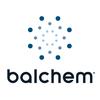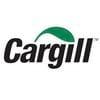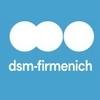A field study on prevention of subclinical hypocalcemia in dairy cows supplemented synthetic aluminums silicate or anionic salts in late pregnancy
Published: July 19, 2018
Source : P. Theilgaard*, M. Jakobsen**; *Vilofoss, Denmark, **Protekta Inc., Lucknow, Ontario, Canada
Objective:
The objective was to compare Ca serum concentration and frequency of severe [Ca < 2.0 mmol/L] and moderate [Ca < 2.125 mmol/L] subclinical hypocalcemia (SCH) in cows supplemented according to the Dietary Cation Anion Differences (DCAD) principles or with synthetic zeolite.
Materials and methods:
- The trials were performed in two large commercial farms in US and blood samples were taken within the first 24 hours after calving.
- The test consisted in comparing plasma Ca concentration when the farms were using DCAD management for preventing hypocalcemia (in Farm 1 at -14.7 mEq/100 g DM (full DCAD) and in Farm 2 at 0.62 mEq/100 g DM (partial DCAD)) with the plasma Ca concentration levels when synthetic aluminum silicate was supplemented by using the commercial product X-Zelit (Protekta Inc/Vilofoss, Graasten, DK).
- The differences in the plasma calcium concentrations between treatments were tested within farms with ANOVA using the lm procedure in the R package. Fisher’s exact test was used to assess differences in incidences of SCH.
Results:
The plasma calcium concentration was significantly (P < 0.001) higher in the X-Zelit group compared to the DCAD group on both farms (Table 1).

The frequency of animals having severe SCH [Ca < 2.0 mmol/L] and moderate SCH [Ca < 2.125 mmol/L] was higher for the DCAD group compared to the X-Zelit group in both farms (Figure 1).

Implications:
- The average plasma calcium where higher in the X-Zelit group compared with the DCAD group.
- The results show a lower SCH frequency using X-Zelit compared to DCAD feeding.
- Results suggest that X-Zelit could be an efficient alternative to DCAD feeding for preventing SCH
Vilofoss presented the X-Zelit posters at the ADSA Meeting 2018
Content from the event:
Related topics:
Mentioned in this news release:
Vilofoss
protekta
Recommend
Comment
Share

Would you like to discuss another topic? Create a new post to engage with experts in the community.









